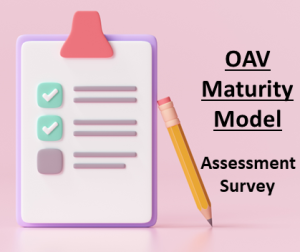Use our Orchestration, Automation and Virtualisation (OAV) Maturity Model to position yourself on your OAV journey
Get a quick look at your OAV progress in four main areas and subsections
Previous research on the status of OAV in the European NREN community has shown significant differences among institutions in scope. The differences can be observed at the level of user groups and use cases, implementation approaches, levels, tools, systems, processes … either in the area of orchestration, automation or virtualisation. Such differences made it hard, if not impossible to compare different organisations and institutions. Thus, defining a maturity model that can be used regardless of an institution type imposed itself as a natural solution.
The first step when defining the maturity model was to explore existing maturity models and their fit into the community and all dimensions that needed to be explored, to conclude that existing models do not present a suitable fit. Therefore, a new model is developed. The dimensions in scope are: Architecture & Technology, Processes & Services, Vision & Strategy, and People & Organisation, each of them considering six possible stages marked from the lowest to the most advanced stage as sit, crawl, walk, run, fly, and energise.
To get a quick look at your own OAV progress complete our OAV Maturity Model Assessment Survey.
Infoshares ++ Research
Infoshare: Maturity Model for Orchestration, Automation and Virtualisation, Oct. 21, 2022
Dimensions of the OAV Maturity Model | |||||||||||||||
| For each dimension additional subdimensions are defined and the Maturity Model lists further subdimensions and an explanation of each of the stages. | |||||||||||||||
Why use an OAV Maturity Model?
Maturity models are streamlined depictions of an organisation's capacity for continuous improvement in a specific discipline. In other words, the model evaluates how well a company or system is able to improve itself from a given state, allowing you to observe a company's maturity level in terms of either the quality or use of the discipline's resources.
The justification for implementing our own maturity model is that, after conducting extensive research on existing maturity models, we were unable to identify one that was suitable for Orchestration, Automation and Virtualisation. We desired a maturity model that NRENS could use to assess their OAV-related status. In addition, maturity models evaluate qualitative data when specific dimensions and stages are established. In the case of OAV, we desired to establish the dimensions as Architecture & Technology, Processes & Services, Vision & Strategy, and People & Organisation, and the stages as none, crawl, walk, run, fly, and energise. Because NRENS can illustrate the status of each dimension with ease. Thus, the realisation of a new model of maturity was unidirectional.





